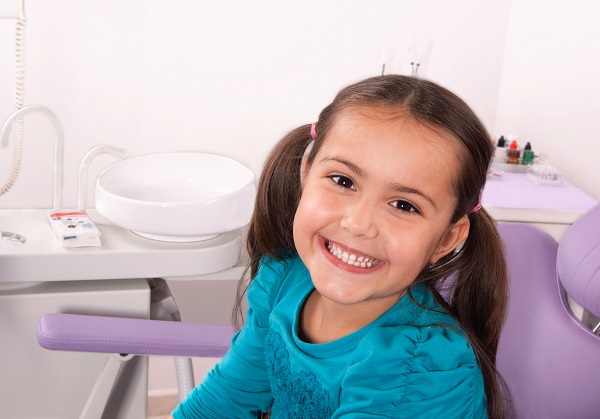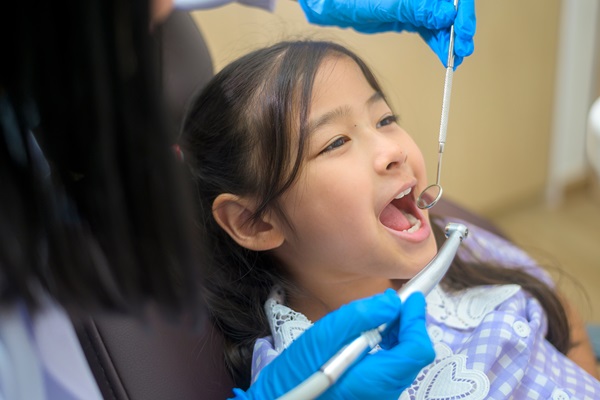Making a Pediatric Dentistry Appointment for Facial Swelling

Pediatric dentistry is an important branch of dentistry that focuses on the treatment of children, infants and young adults. Facial swelling is a common problem in young patients. An abscessed tooth is often associated with facial swelling. Read about when you should take your child to a pediatric dentist for a dental abscess with facial cellulitis.
Pediatric dentistry for facial swelling
A dental abscess is an infection at the base of a patient’s tooth. It usually means a pus pocket has formed at the tip of the root of the tooth in the jawbone. If left untreated, the infection can appear as a swelling on the gum near the tooth. Serious infections usually spread to the face, which causes the face to swell (cellulitis). This is regarded to be a very serious infection.
Once the swelling begins, it is not uncommon for it to spread quickly. A dental abscess often begins with a cavity or crack in a tooth. The pain is usually made worse by biting on hard foods or drinking cold or hot beverages. The pain may spread from the tooth to the jaw area on the same side or the ear.
When to see a pediatric dentist
Some common signs and symptoms of an abscess include fever, swelling in the cheek or face, pain, redness in the gums and a bad taste in the mouth. Difficulty breathing is also another common symptom. A parent should schedule an appointment with the dentist or doctor after noticing any of the signs and symptoms of the infection. Seeking immediate medical care or calling the dentist or doctor right away is highly recommended if the child has worsening signs of the infection. These include increased pain, swelling, redness or warmth or fever. Going to the emergency room is ideal if the dentist cannot be reached or if the child has trouble breathing.
Home care
There are several ways the parent can care for the child at home. Putting a cold pack or ice on the outside of a child’s cheek may reduce swelling and pain in the face and jaw. This should be done for either 10 to 20 minutes at a time. If an antibiotic is prescribed, it should always be taken as directed.
It is recommended for the child to take the full course of antibiotics. Over-the-counter medicine can also help ease the pain. Children should avoid hot and cold drinks and foods. Chewing on the side of the infected tooth is also discouraged.
Follow-up care
An abscessed tooth can be treated in a variety of ways. Follow-up care with a pediatric dentist is very important when it comes to your child’s treatment. Severe cellulitis should be checked again within 24 hours. Once a tooth infection occurs, it may continue being an issue until the infection is drained.
This may be done through a root canal or surgery. Sometimes, if other treatments do not work, your child’s tooth may have to be pulled. If you want to find out more about when you should schedule a pediatric dentistry appointment for facial swelling, talk to your pediatric dentist as soon as possible. Seeking treatment early is always recommended.
Request an appointment here: https://www.grandparkwaypediatricdental.com or call Grand Parkway Pediatric Dental at (832) 579-0960 for an appointment in our Richmond office.
Check out what others are saying about our services on Yelp: Read our Yelp reviews.
Recent Posts
Pediatric dental patients with chipped or broken teeth have more options for tooth repair than in the past, such as composite fillings. These dental fillings can both restore a tooth and prevent the increased chance of gaps in the smile or shifting teeth that usually follows a tooth extraction. They can also provide a natural-looking…
A pediatric root canal can help preserve a child's oral health and prevent further complications when a tooth becomes damaged or infected. A dentist will determine if treatment is necessary based on symptoms and an examination. Understanding the signs of infection and the treatment process can help parents make the best decision for their child's…
Created with quartz or glass and using a resin medium, composite fillings are quickly becoming the go-to for many pediatric dentists. The fillings restore functionality to broken teeth by allowing the patient to bite or chew without pain. In addition, because the fillings look like natural teeth, they may help with self-esteem in relation to…
Dental caries, commonly known as tooth decay or cavities, are a prevalent dental problem among children. Composite fillings are one great solution to this often painful and sensitive issue. Composite fillings work to stop tooth decay in its tracks while still allowing filling recipients to maintain a more natural-looking smile.Composite fillings, composite resin fillings, or…


